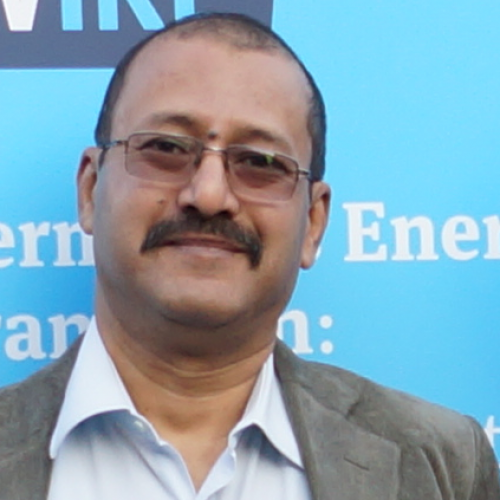Three questions to Soumya Sarkar, CLEW Ambassador for India
Soumya, what is the most important energy topic or debate in India right now?
India is a big and diverse country and there is never one big topic on energy that dominates the news. Having said that, there are two major themes where debate and discussions are taking place — renewable energy, mostly solar and wind, and the development versus decarbonisation debate, although it is not often described in these terms.
It is now well-known globally that India is taking rapid strides in installing renewable energy capacity. What is less known is the fact that it has been affecting this transition with virtually no subsidies or government incentives. Cost of electricity from renewable sources is now cheaper than coal-fired power, and this widely reported fact has not escaped the attention of investors and project developers. Despite this, India has a long way to go because it still relies majorly on coal in a country where access to reliable sources of electricity is not yet available to all citizens.
However, that is only part of the story. In the short term, the pace of growth of renewables has slowed down due to reasons that include the overall slowing down of the economy and some tariff barriers the federal government has erected to encourage the domestic solar industry. There is anxiety among investors and developers, but the issue of customs and anti-dumping duties have not been adequately reported. There have been other headwinds as well, with some provincial governments trying to renegotiate tariffs of older renewable power projects that were pegged at a higher level than is currently prevalent. This has made the renewables industry jittery.
The other main theme is related to overall development and is conducted mostly among economists and environmentalists. Environment and development are often seen as adversarial positions and there are many who argue that India cannot afford to ignore coal as a driver of economic growth. Although nobody disputes that renewables are the future, the role of fossil fuels is unlikely to diminish significantly in the short term. The debate is quite passionate and there seems to be no middle ground as yet. On the policy level, the mainstream media is still tilted in favour of rapid development with not much attention paid to decarbonising the economy.
A third theme that has emerged in recent times is electric mobility, with the government announcing major programmes and incentives to promote electric vehicles, both personal and mass transit, such as buses. There has been a silent revolution on the ground in the form of electric rickshaws that have proliferated across the nation and which run on conventional truck batteries. It is likely that this subject will gain increasing importance in the next few years.
Another theme that is emerging is the maturing of the energy transition discourse. There is an increasing realisation that it is not just about growth of renewable energy but also about access, equity and social justice. This, along with the subject of decentralised renewables access in the form of mini-grids and rooftop solar, will claim increasing mind space while discussing the future course of India’s energy transition.
How do you view your role as CLEW Ambassador?
I think the role is still evolving. Till now, it has been about learning and sharing Germany’s energy transition story with my peers and colleagues in India. The network is still in its early phase and the possibilities are many. As a CLEW ambassador, I feel that there are benefits from increased interaction with network members, since the energy transition has a strong global perspective in light of the climate crisis, and the cross-pollination of ideas and themes among journalists can only enrich the narrative in our respective areas of reportage.
Another way that the network can help is to break down the silos in which energy and environment journalists often work. They are often insufficiently aware of each others’ roles, which is complementary, and therefore, collaborative work is largely missing, both at the national and global levels. The other obvious area that can be developed is to replicate the excellent study and reporting tours conducted by CLEW within India and South Asia.
What is your advice for local journalists starting out with covering the energy transition – and what guidance would you give an international journalist doing an energy transition story on India?
In India, a large number of new people are entering the profession after graduating from journalism schools. I think it is vital that some study modules on energy transition and decarbonisation for sustainable development need to be introduced in these programs.
For a working journalist reporting on energy (which tends to be restricted mostly to business newspapers and business TV channels), I’d say that they need to make themselves a little more aware of the bigger developmental context within which energy is placed. But that advice is easier given than taken.
For international colleagues wanting to work on energy transition stories in India, I can possibly help with contacts and suggest field locations that would help with their stories. As I’ve said earlier, since India is a big country with diverse issues, my main advice to global peers would be to focus on one or two specific issues rather than trying to capture the entire scenario. I’ll be only too glad to be of any help in this regard.
If you are an international journalist doing a story that involves research on energy transition and climate policy in India, you can reach out to Soumya Sarkar as a first contact point. Beyond that, our other CLEW Journalism Network members in India, as well as our second, Mumbai-based ambassador in the country, Vaishnavi Chandrashekhar, might be able to help you out, or be interested in collaborating on an energy transition story with you.
If you are an India-based journalist with an idea for a project on-the-ground, Soumya is there to take your suggestion to us at CLEW.
Should you be looking for expertise in other countries – go and have a look at the CLEW Journalism Network map!


